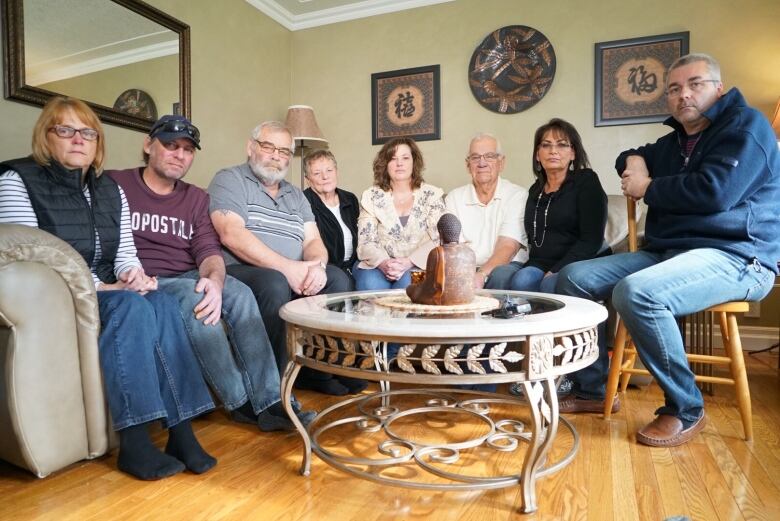Why some killers end up in minimum security and others don't
A former top justice official says how you see the role of prisons often comes down to ideology
A former top justice official says it's not uncommon for killers like Christopher Cowell to end up in a minimum security institution shortly after being sentenced for first-degree murder.
There are a great many people serving life sentences in minimum security.- Mary Campbell, former top justice official
Cowell was convicted of first-degree murder by a Woodstock jury in 2002for handcuffing his estranged wife Shelley in the basement of their Woodstock home before he beat her and stabbed her to death in a crime so bloody, the sentencing judge said the images "stand as mute testimony to the horrific manner of [Shelley's] death."
Shelley's family spoke upafter learning last month that Cowell was not only living in a minimum security facility in BC, but he was getting day passes to visit his wife, a former prison worker, and their young daughter.
Mary Campbell, a former Director General of Criminal Justice at the Ministry of Public Safety told Power and Politicshost VassyKapelos Thursday that Cowell's case isn't unusual, despite the savage nature of his crime.
"Not at all," she said. "There are a great many people serving life sentences in minimum security."
'There is a science behind this'

Campbell said prison officials look at a number of factors to try andpredict the future behaviour of an inmate and that just because a prisoner has committed a terrible crime, it doesn't necessarily mean they pose a significant risk to commit another one.
"The type of crime you committed is certainly a major factor, but it's not the only one," she said."There is a science behind this."
Some people really want the system to punish.- Mary Campbell, former top justice official
Campbell said in assessing a prisoner's risk, corrections officials also look at how likely the inmate is to attempt an escape and if they got out, how likely they might commit a violent crime.
Even with many violent killers serving out their sentence in minimum security, there are few escapes, she noted,with only eight out of Canada's 24,000 prisoners successfullybreaking out last year.
A 2017 Parole Board of Canada report on Cowell's case obtained by CBCNews stated that Cowell does not pose a security risk,that hisbehaviour as a prisoner was "impeccable throughout his sentence" and that he is "a low risk for general and violent recidivism."
The report also states that the board "remains concerned about the extreme violence" of his crime and that Cowell is at a "high risk for future violence in the context of an intimate relationship."
How you see it comesdown to ideology

Campbell said it's natural for people as outsiders to question how the corrections system sorts prisoners in terms of maximum, medium and minimum security and that not everyone willunderstand or agree.
"I guess it comes down to, in part, a bit of a difference in ideology," she said. "Some people really want the system to punish and.. ..I understand that."
They don't all need to be in max.- Mary Campbell, former top justice official
Campbell said the mandate of the Corrections Service of Canada is to not only have prisoners serve out their sentence, but try to rehabilitate them through treatment so that when their sentence is over, a convict can become a law abiding member of society.
"They don't all need to be in max. It's like going to the hospital tonight, you don't put everyone in ICU. You do a triage, you do an assessment based on some science. People who need the most treatment, need the most security are going to be in the highest, most expensive, most intensive setting and others who don't need that will be cascaded down."
Better communication with victims needed

Still, Shelley's family wants the federal government to make it mandatory for murder victims' families to fill out a victim registration form with the Parole Board of Canada because they say they were never told about it when Cowell was imprisoned17 years ago.
Campbell agreed that communication "is hugely important," but noted that the system is the way it is because most people who are related to a homicide victim are unlike Shelley's family.
"We talk to a lot of victims and they did not want any further involvement, they did not want to be contacted," she said. "So can we do a better job of reaching out to the ones who do?Yeah I would say so."
A written statement from the office of Public Safety Minister Ralph Goodalecondemned Cowell's crime, expressed sympathy with Shelley's family and said it is committed to giving victims as much information as possible, though itdid not address the family's request directly.













_(720p).jpg)


 OFFICIAL HD MUSIC VIDEO.jpg)
.jpg)



























































































